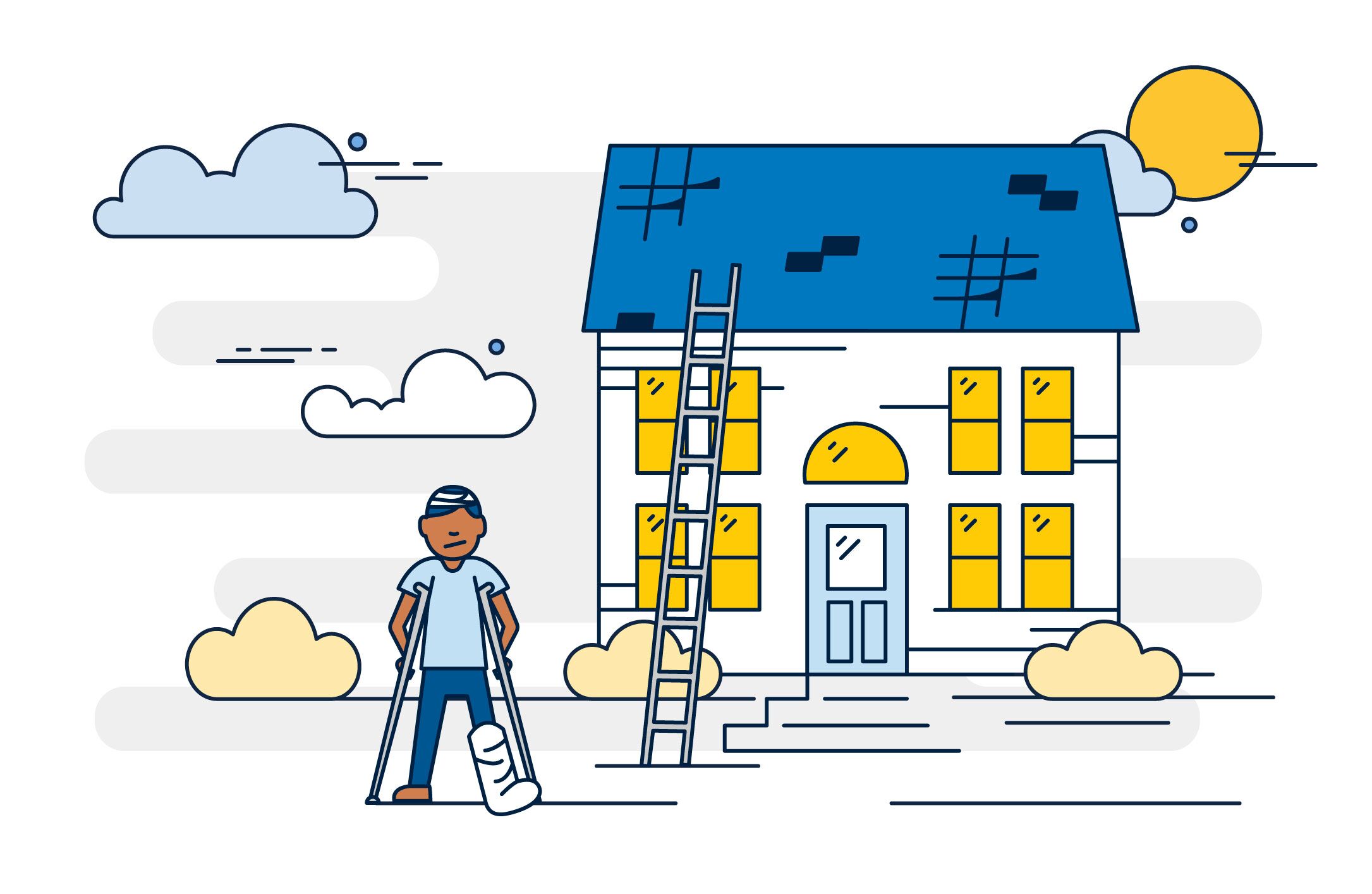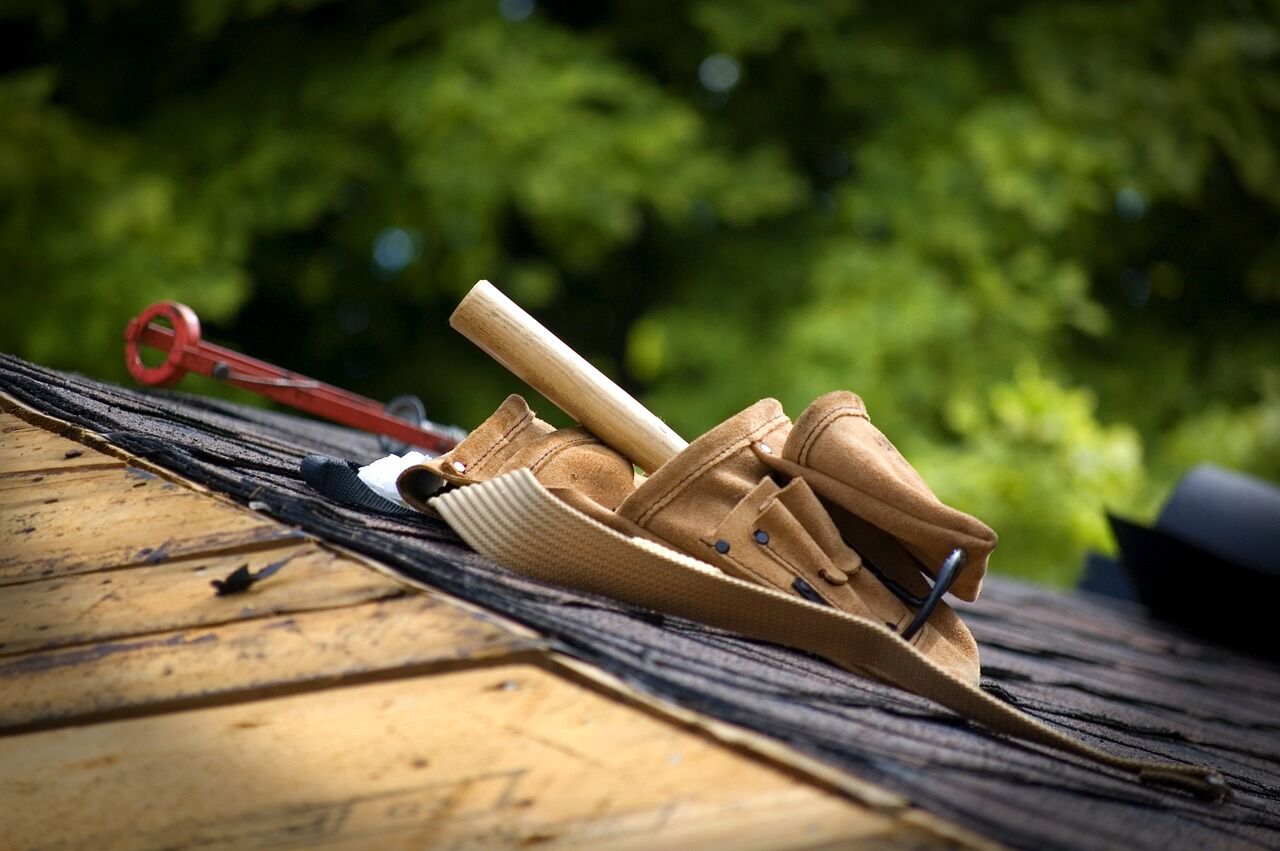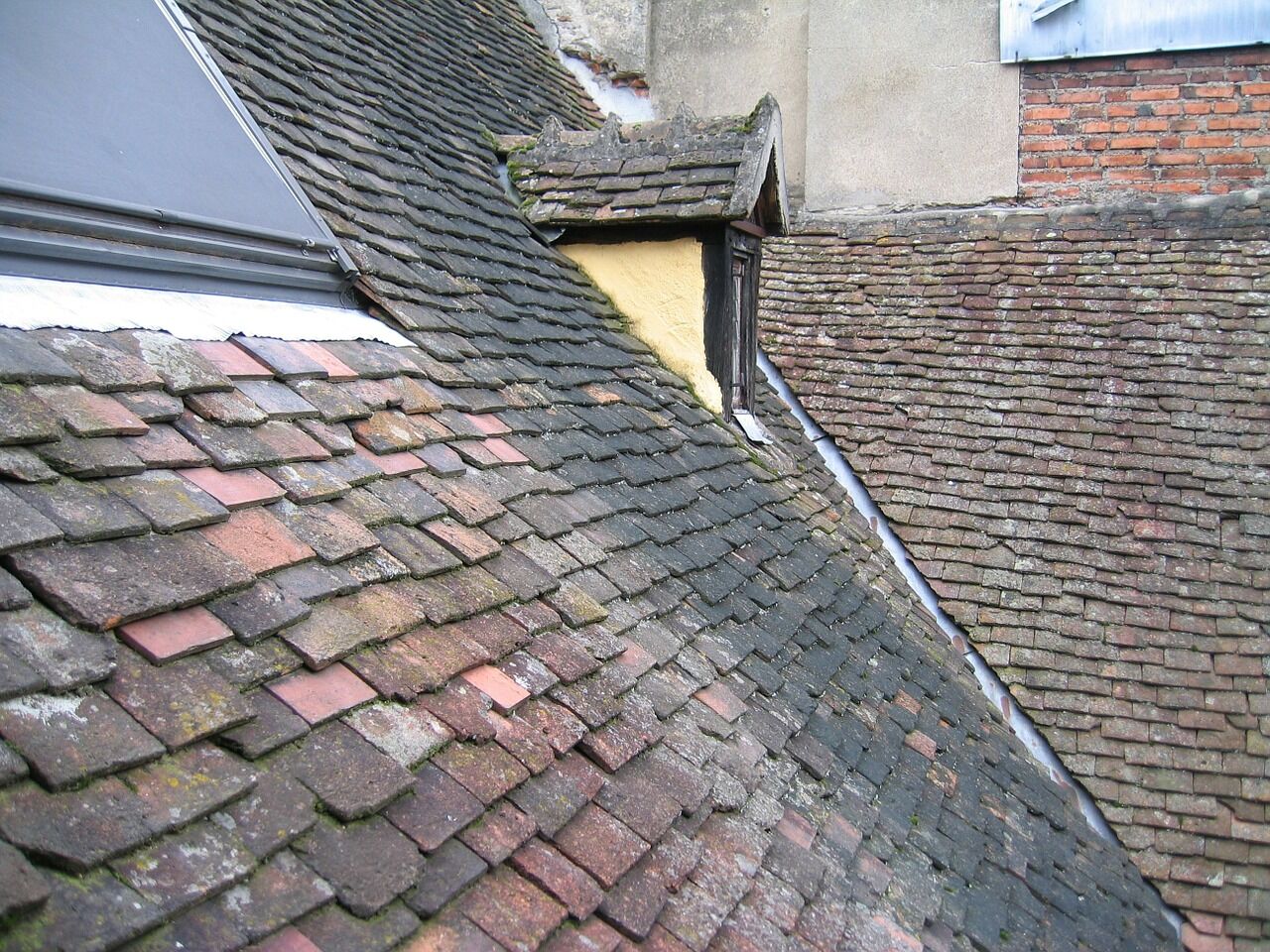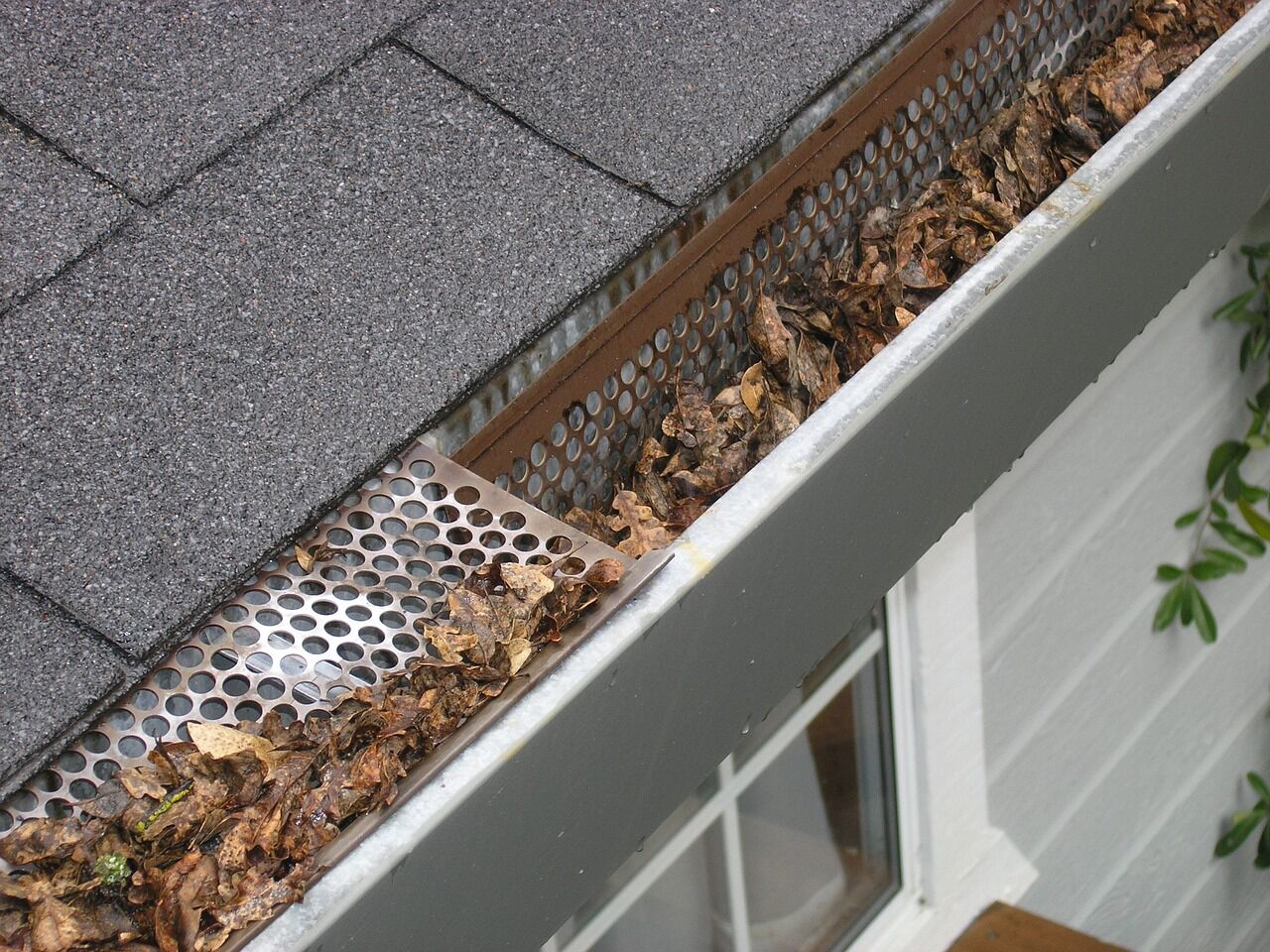Bad Roofing Decisions That Can Cost You
Published on Tuesday August 22, 2017
When it comes to maintaining our homes, we tend to focus on the things we can see every day—like flooring, painting, and appliances. We can tell when they need a good cleaning, a touch up, or when they’re on their last leg.
Roofing? Now that’s a different story.
Most of us don’t consider the condition of the roof until we notice a problem. Your roof and your home are big investments. That’s why every homeowner needs to know how to protect their investments by avoiding common mistakes.
The common mistakes that could result in a bad roof installation are DIY home roofing, choosing the company with the cheapest price, not replacing a roof that has signs of damage, and not cleaning gutters.
Avoid These Common Bad Roofing Decisions
1. Why pay a professional when I can do it myself?

Let’s face it, we all want to save money on home maintenance and repairs. And there are times when a little elbow grease on your part can save you money without sacrificing (too much) quality.
Not so with much with bigger projects like roof installation. Roofing is a complex job that requires professional training. An improperly installed roof can result in damage to your attic, walls, and even foundation.
And then there’s the safety issue. Even seasoned do-it-yourselfers underestimate the danger of taking on a roofing project themselves. In fact, roofing is rated as one of the top ten most dangerous jobs, according to a 2017 CNBC article.
There’s more to a roof than shingles.
A roof is made up of several layers that work together as a system to protect your home. Proper installation of each component protects the roof, attic, walls, and foundation from wind, rain, ice, heat, and humidity.
In addition to shingles, a complete roofing system includes:
- Deck: The main wooden structure.
- Underlayment: A layer installed under the shingles to keep the deck dry.
- Flashing: Material used to deflect water away from seams or joints around chimneys, exhausts, etc.
- Vents: Items that optimize air flow through the attic to keep the roof dry.
- Drip edge: Material along the edge of the roof that guides water to the ground or in the gutters.
- Soffit: The area underneath a roof overhang.
- Fascia: The horizontal roof trim on the end of the rafters that often holds the gutters.
- Winterguard: waterproofing shingle underlayment – key in fighting water penetration
Even if you don’t decide to tackle a roof installation or repair yourself, it’s important to understand the whole roof system when hiring professionals.
2. I’m going to go with the company with the cheapest price.

Hiring the lowest bidder for your roof installation is a dangerous move. What may appear to save you money in the short-term will likely lead to long-term trouble and costly repairs.
“Cheaper is not always better,” Says Yanni Avramidis, vice president of production for Long Roofing.
“People often purchase a roof based on the price alone, which is not a good decision. A significant amount of the roofs we replace were done poorly or with builder grade or contractor grade materials, which is why we are called to replace them much earlier than the homeowners were planning on.”
What to look for when choosing a roofing contractor
Whether you’re choosing a contractor for repairs or for a complete roof installation, there are some key questions to ask. Any reputable roofing company should be willing to answer your questions in detail and in a professional manner.
Know the basics:
Insurance. Before moving any further with a potential roofing contractor, make sure the company carries both liability and workers’ compensation insurance. Protect yourself from the very beginning.
Credentials. Determine the credentials of the workers employed by the company. Are they licensed or certified?
Warranties. Will the material used come with warranties for product and labor? Who is responsible for paying for the replacement of defective materials?
Other important factors to consider:
Experience. How long have they been in business? Are the workers seasoned?
References. Ask for references you can call yourself. Don’t rely on online reviews.
Professional advice and recommendations. Reputable companies should offer advice and product recommendations specific to your home situation.
3. My roof is showing some signs of damage, but I think I can squeeze out a few more years.

Holding off on replacing an older product that no longer performs well can cost you more money in the end. Think cars, air conditioners, and furnaces. Well, your roof is in the same category.
Waiting until you see obvious signs that it is in need of repair—water stains, sagging attic ceiling— is not necessarily going to save you money. In fact, the damage it may cause to your home can cost you big bucks.
When a roof is approaching 10-15 years of age, you should consider replacing it. Homeowners should be on the lookout for preliminary signs of damage, such as shingle edge curling or missing shingles.
“If you know you are going to stay in the house and the roof is showing signs of wear, you don’t want to wait another two years,” says Avramidis.
“You may have a leak and you don’t even know it, which will cause more wood damage. Labor, materials, and insurance are going to go up in two years. If you know you are going to replace it, you might as well do it now and save the money.”
And replacing an old roof can actually save you money on utility costs. Avramidis explains that if a roof does not have proper ventilation, attic temperatures will soar on a hot day.
“On a 100-degree day, that attic can be up to about 140 degrees. Your upstairs is going to be hotter, and now your AC has to run more to cool it off.”
4. I don’t clean the gutters that often. What harm can it really do?

While you probably know that you shouldn’t let your gutters get clogged, you may not know why. Clogged gutters can surprisingly cause a lot of damage to your roof, attic, and foundation.
Clogged gutters can cause the most damage in the winter. You know those pretty icicles that hang off the roof’s edge after a snowstorm? They’re the result of “ice damming,” caused by clogged gutters, and can wreak havoc on your attic and roof.
That’s why autumn is one of the best times to have your gutters cleaned or have gutter guard installed before the winter months.
Think it’s time for a new roof?
If you think you may need a new roof, contact Long Roofing online to request an estimate. We build trust and peace of mind into every Long Roof.
Interested in Long Home Products?
See our special offers now.








